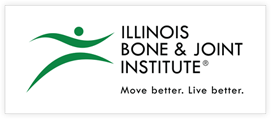Labral Tear
The shoulder is a complex collection of structures that allow the greatest range of motion of any joint in the body. Shoulder pain and dysfunction are among the most diagnosed and treated conditions in orthopaedic surgery.
Shoulder anatomy
The shoulder joint is a ball and socket joint. The ball is the head of the upper arm bone (the humerus). It sits in a shallow socket on the shoulder blade (the scapula). The socket is rimmed by a piece of soft piece of cartilage called the labrum. The labrum deepens the socket to hold the ball in place and stabilize the joint. The labrum circumferentially surrounds the socket and Dr. Patel will often refer to the location of a labrum tear using the numbers on a clock. Different locations of the labrum have different functions. Some labral tears are more related to instability and others are more related to pain.
Labral tears typically result from a trauma such as a direct blow, an auto accident, a fracture, a dislocated shoulder, falling on an outstretched arm, repeated microtraumas from repetitive use and wear and tear, and quick forceful overhead motions like lifting a heavy object. Labral tears are common in overhead athletes who participate in overhead throwing activities like pitchers, quarterbacks, and swimmers. Weightlifters and golfers are also at risk of a repetitive use injury that causes a labral tear. Young and middle-aged laborers also often suffer with a labrum tears. There is increasing evidence that SLAP tears are present on an MRI in asymptomatic overhead athletes.
- Popping, clicking, or grinding sensations
- A deep ache and pain
- Pain with overhead motion
- Decreased range of motion
- Loss of strength
- Shoulder instability causing a feeling that the shoulder is loose and slips
The most common types of labrum tears are a SLAP tear, Bankart (anterior) tear, and posterior labral tears.
- A SLAP tear is a tear at the top of the socket where the biceps tendon attaches to the labrum. Symptoms include pain at the front of the shoulder and disability. SLAP tears are common in throwing athletes like baseball pitchers and patients who frequently perform overhead activities like volleyball players. SLAP tears commonly occur with concurrent shoulder injuries and can occur from traumatic impact to the shoulder.
- Bankart tears are the result of anterior shoulder dislocation. Bankart tears occur at the front bottom of the socket. When the humeral head slips out of its socket it tears the labrum resulting in instability which predisposes to another dislocation. Symptoms include a sensation of the shoulder giving out, catching, and locking and an aching shoulder.
- Posterior labral tears are relatively uncommon. They are located in the back of the socket. These tears can be from attritional damage with the arm in forward flexed position as often seen in football linemen or from acute trauma: Posterior shoulder dislocations or subluxations. Symptoms typically include pain but can include posterior instability or sense of the shoulder giving out.
Dr. Patel will review your medical history and take a history of your shoulder injuries related to sports, and your occupation and how your symptoms interfere with your daily activities. He will perform a thorough orthopaedic examination testing range of motion, shoulder stability, muscle strength and pain. He will order x-rays to evaluate the bones, and an MRA to detect tears and determine the severity of the tear. A MRA is an MRI with contrast injected into the glenohumeral (shoulder) joint; it is the preferred method of evaluating for labrum pathology.
From that information he will form an opinion about the cause of your pain and dysfunction and make recommendations about how to deal with your symptoms. This may include over the counter anti-inflammatory medications, injections, rest, activity modification and physical therapy. Many tears can be treated without surgery; however, if non-surgical management fails, Dr. Patel will go over surgical options with you.
Dr. Ronak M. Patel is a double board-certified orthopaedic surgeon and sports medicine physician. He completed his bachelor’s degree, medical degree, and residency training at Northwestern University. He, then completed his fellowship training at the Cleveland Clinic. He specializes in the treatment of complex knee, shoulder and elbow injuries and degenerative conditions. Contact him to schedule a consultation to learn more about how he can help you return to the life you love and the activities that make life worth living. He serves teens and adults in Chicagoland and NW Indiana.
At a Glance
Ronak M. Patel M.D.
- Double Board-Certified, Fellowship-Trained Orthopaedic Surgeon
- Past Team Physician to the Cavaliers (NBA), Browns (NFL) and Guardians (MLB)
- Published over 49 publications and 10 book chapters
- Learn more

